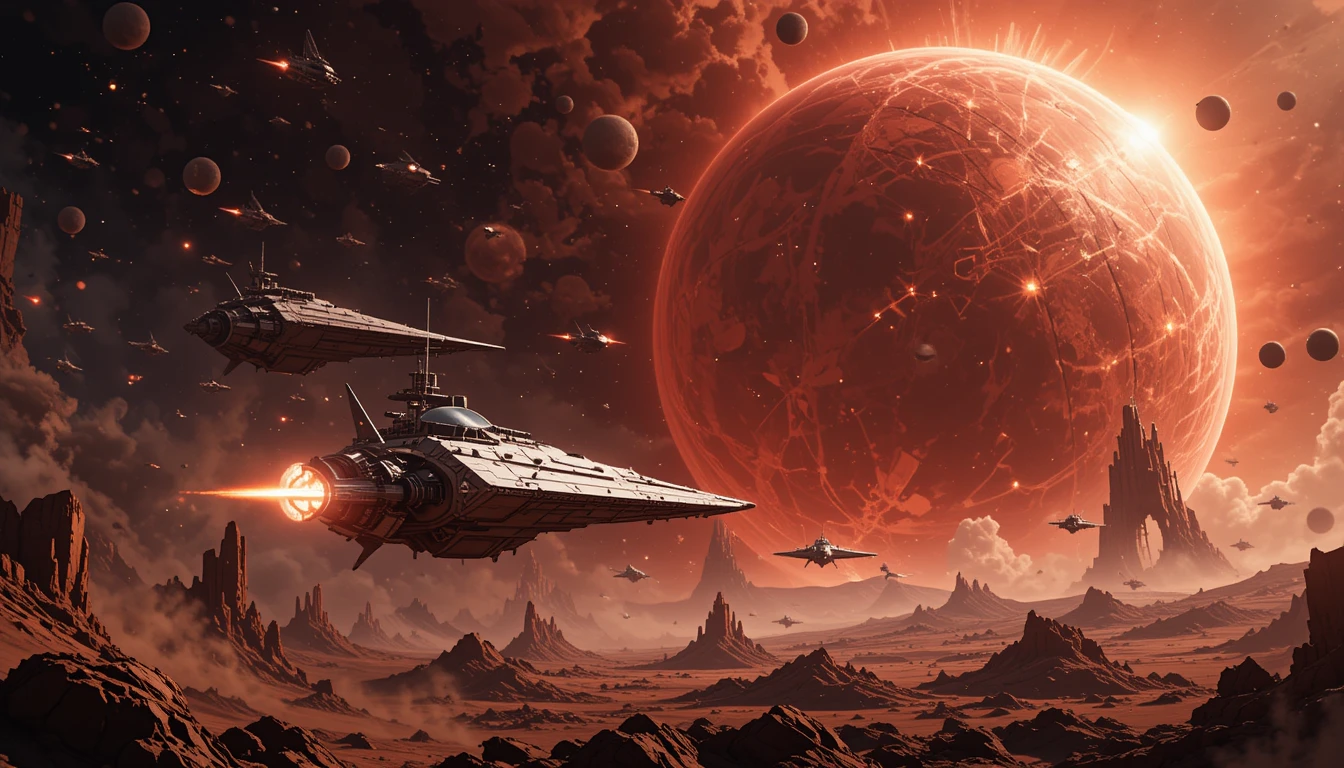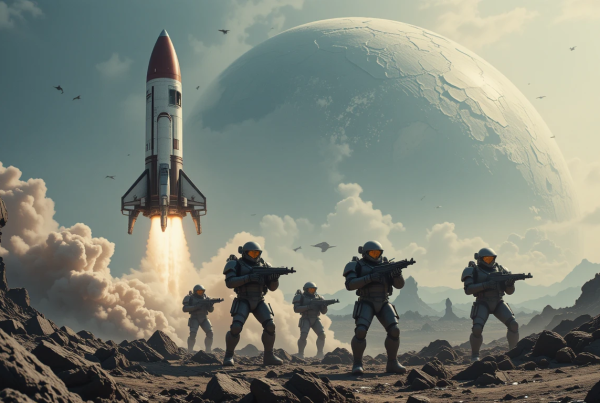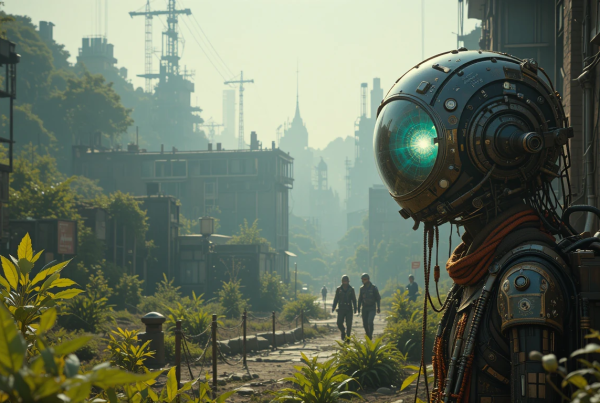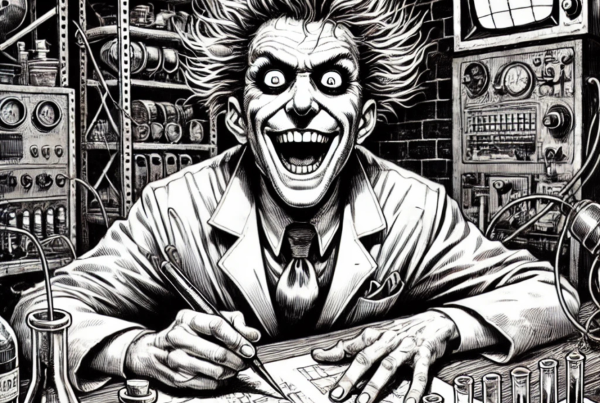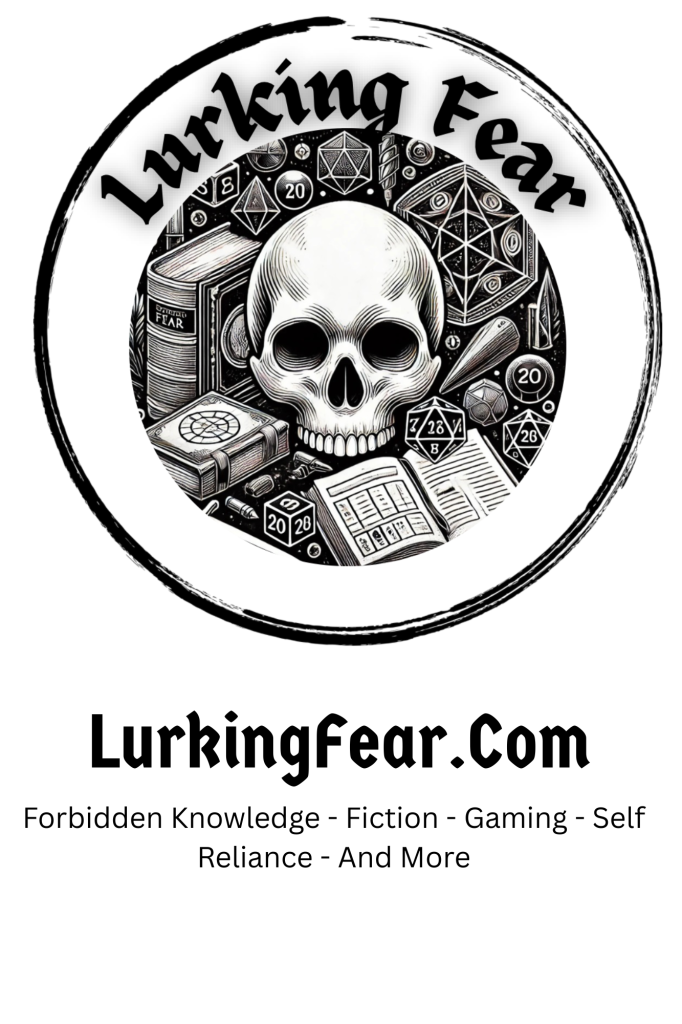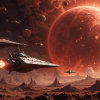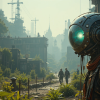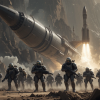- Key Takeaways
- Defining Principles
- The Spectrum
- Core Themes
- The Writer’s Challenge
- Foundational Works
- Cultural Resonance
- Conclusion
- Frequently Asked Questions
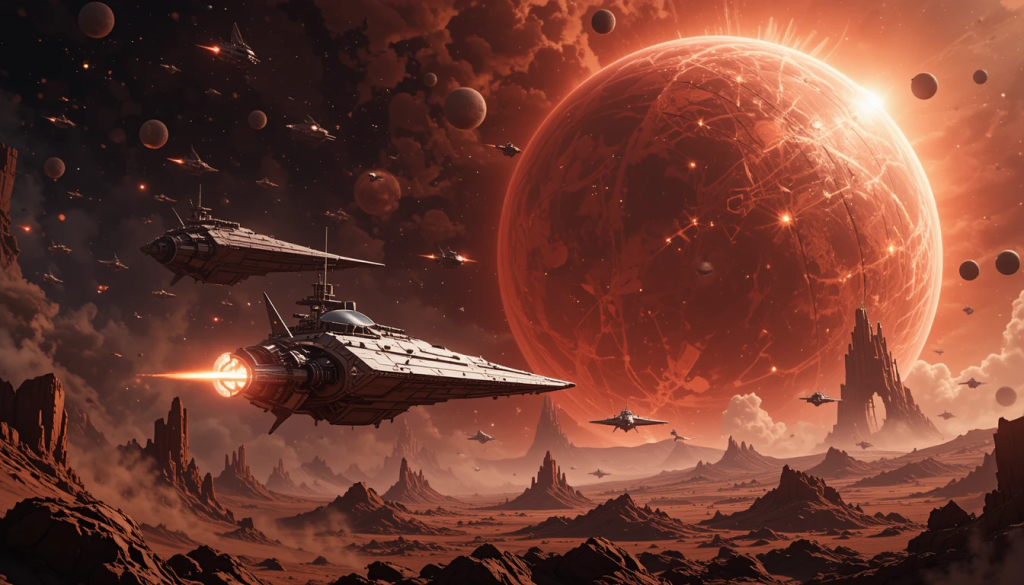
Hard Science Fiction
Key Takeaways
- Hard sci fi separates itself from other sf by emphasizing scientific accuracy and real world physics, requiring hard sf writers to keep scientific rigor at the forefront of believable immersive storytelling.
- The genre builds believable futures based on scientific, technological, and principled trends, giving readers clever speculation with an empirically-reasoned foundation.
- Problem solving is a narrative cornerstone, with characters facing science-based problems that require creative, yet technically accurate, solutions — increasing both the reader’s investment in the story and its educational value.
- The Mohs Scale and the ‘show, don’t tell’ method assist us in differentiating between sci-fi genres, highlighting that hard sci-fi is held to very different standards than soft sci-fi and science fantasy.
- Hard science fiction’s key themes of exploration, discovery and consequence echo humanity’s own journey with science and technology and inspire readers to contemplate the larger impact of scientific progress.
- Writers should balance technical detail with compelling narratives, work closely with experts, and stay abreast of scientific progress to keep their stories both authentic and relevant in a global context.
Hard sci fi is science fiction that remains very near the real science and reality. Tales in this mode employ actual physics or biology or chemistry, and frequently depict future tech grounded in what can be done by today’s standards. Writers work with known laws — avoiding fantasy, the attention remains where it should be, on what could really happen.
Readers discover descriptions of space flight, computers, or genetics, displayed with tenderness and real-world reasoning. Authors usually consult experts or do deep research to maintain authenticity. Hard sci fi can sometimes seem slow, but it offers powerful concepts and genuine tension.
In the upcoming installments, watch how hard sci fi influences our thoughts about science, technology, and the future.
Defining Principles
Hard science fiction is notable for its emphasis on scientific accuracy and real-world physics. This type of fiction counts on accuracy, internal coherence, and connection to accepted scientific principles. Authors leverage research and technical know-how as the scaffold for constructing believable worlds and trials. Scientific accuracy is paramount, and each piece–whether it be a new technology, an alien biosphere, or a space mission–has to fit within actual or hypothesized rules based in real science.
1. Scientific Rigor
Hard sci-fi authors must have a firm foundation in the sciences. They tap physics, biology, chemistry, engineering — everything — to spin a tale that sounds authentic to the technically-savvy reader. Scientific rigor lends the plot and characters credence. Readers believe the world-building because it adheres to ideas they understand, like orbital mechanics or genetic manipulation.
Like Arthur C. Clarke’s Rendezvous with Rama or Kim Stanley Robinson’s Mars Trilogy, most hard science fiction employs real scientific laws as plot devices. These tales apply scientific concepts like the law of energy conservation, thermodynamics, or evolution. A scientific error can shatter the illusion, sapping the tale’s power and prestige with its readers. That’s why authors turn to experts or peer review to not screw up.
2. Plausible Futures
Writers envision the future by extrapolating existing science and technology. Settings are constructed from meticulous study, rendering them credible even as they venture into the unfamiliar. This strategy hooks readers who anticipate realism. Provocative plausibility can illustrate how science is bound to transform society, such as the ascent of AI or colonizing other planets.
Greg Egan’s Permutation City and Andy Weir’s Martian are famous for this. By demonstrating how innovative concepts might alter everyday existence, hard sci-fi assists readers in considering real-world obstacles.
| Scientific Principle | Current Technology | Plausible Future Example |
|---|---|---|
| Genetics | CRISPR editing | Engineered disease resistance in crops |
| Propulsion Physics | Ion drives | Manned missions to Mars |
| AI & Computing | Machine learning | Autonomous urban planning |
3. Problem-Solving
Problem-solving is the essence of hard sci-fi stories. Our characters solve real scientific challenges with rationality and ingenuity. These tales, more often than not, follow readers through the process of test, fail, try again—like real research.
In Cixin Liu’s The Three-Body Problem, characters wrestle with advanced physics and mathematics to discount existential threats. These stories are educational too — they make science approachable with compelling storylines. Readers discover ideas such as orbital transfers or chemical reactions as characters do.
Problem-solving stories hold readers’ interest by combining mystery with resolution.
4. Show, Don’t Tell
Hard and soft sci-fi exist on a continuum. The Mohs Scale of Science Fiction Hardness rates stories by how tightly they cling to actual science. Hard sci-fi, like Andy Weir’s, lays out details incrementally, allowing readers to witness science in action.
Soft sci-fi is concerned with concepts or feelings, frequently glossing over the technical aspects. Science fantasy marries the two — mashing science with myth. In every example, hard sci-fi’s “show, don’t tell” technique applies action and specificity so readers experience the science in operation, not just told about it.
The Spectrum
Science fiction exists on a spectrum, hard to soft, influenced significantly by its proximity to actual science. The Mohs Scale is a convenient shorthand for placing stories on the spectrum, grading them by degree of adherence to known laws of nature. Sci-fi authors apply this scale to indicate whether their narratives are firmly linked to physics and math, or if they fudge the details for plot or atmosphere.
Mohs Scale
The Mohs Scale, referencing the mineral hardness scale, ranks sci-fi by scientific accuracy. At one extreme, 1 or “Pure Speculation” covers fiction where science is just set dressing, and physics laws are disregarded. Soft sci-fi such as Star Wars tends to fall here, combining spaceships with the force.
Level 2 and 3 contain plausible but unproven ideas, as in ‘Star Trek,’ where science is strained but not violated. Level 4, ‘One Big Lie,’ takes one impossible thing—such as faster-than-light travel in The Expanse—then constructs everything else with deliberation.
Level 5 and 6 require adherence to real science, little or no departure from what might be possible. The Martian” is a powerful case in point, where every fact has to align with what we know. Readers can follow their favorite tales along this scale and observe where they tip between reality and fantasy.
Soft Sci-Fi
Soft sci-fi is less concerned with physics and more concerned with people, ideas, and society. Stories sometimes explore power or culture or psychology. In Brave New World, Aldous Huxley investigates the intersection of technology, class, and happiness by discussing social control, not gizmos.
Le Guin’s The Dispossessed uses alien worlds to interrogate politics and human nature. These stories are based on compelling characters and vivid settings, and the science is flexible. Where hard sci-fi relies on detail and rigorous logic, soft sci-fi allows the narrative and character interiority to take the lead.
A lot of readers find these tales more accessible and more emotional.
Science Fantasy
Science fantasy combines the magic and machines of the best of both worlds. Frank Herbert’s Dune blends ecology, religion and futurist tech with mysticism for a distinctive flavor. Tales such as ‘Shadowrun’ wed cyberpunk with magic, allowing elves to hack computers.
This blend of science and fiction allows authors to explore the what-ifs, drawing from scientific concepts with no hard-and-fast rules. They like the liberation and unexpectedness — particularly when conventional sci-fi seems cold or stilted.
Hard Sci-Fi Themes
Hard sci-fi frequently considers exploration, discovery, and the consequences of decision-making. Writers like Arthur C. Clarke and Liu Cixin lean into deep sci to inquire what if we go beyond today’s boundaries. Stories venture into the morality of AI, genetic modification, or astronautics.
These cautionary tales compel us to consider risk, expense, and what it means to be human in a technological age. Examining these themes illuminates how hard sci-fi carves our dreams and cautions for the day after tomorrow.
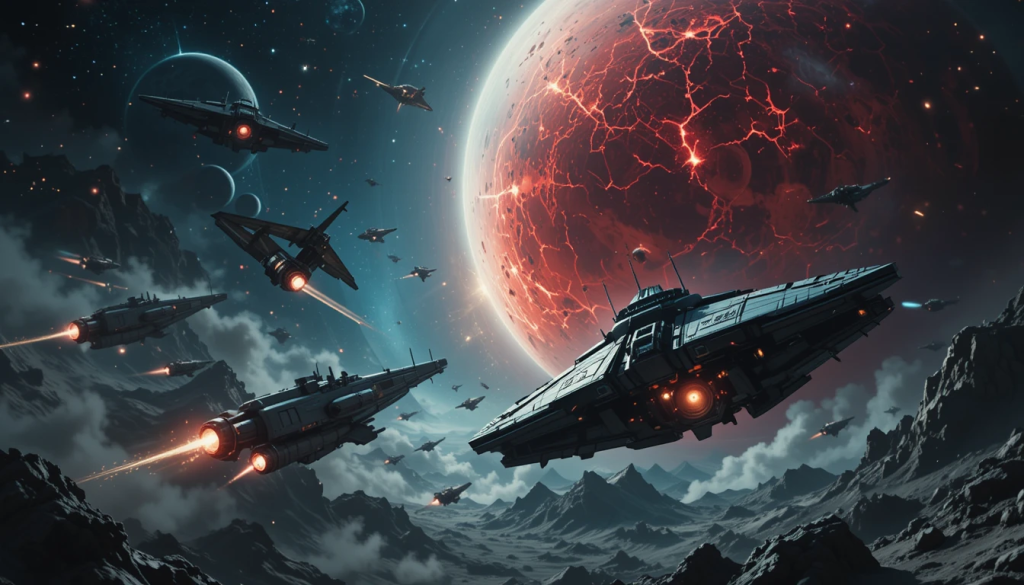
Science Fiction
Core Themes
Hard SF anchors itself in realism, leveraging scientific rigor and technical accuracy to stretch the boundaries of possibility. At its core, the genre prompts readers to consider how science impacts not just the world, but the individuals in it. Core themes of venturing, encountering, and impact propel narratives and sometimes engage world discussions surrounding innovation, morality and community.
Exploration
Exploration courses through hard sci-fi as a central energy. Authors leverage this core theme to demonstrate the motivation to experience, extend and evolve. Our quest for new worlds — out there, or inside — embodies a humanity-nurturing curiosity.
Space travel, starships, and journeys between galaxies, à la Arthur C. Clarke’s Rendezvous with Rama or Liu Cixin’s The Three-Body Problem, imbue tales with awe and a sense of scale. Through these sagas, writers demonstrate that adventure offers hope as well as peril. Characters encounter unforeseen threats, and their reactions develop both story and character.
The theme serves as a mode of querying what lies beyond given borders, physical or social.
Discovery
Discovery future-shapes hard sci-fi. It’s that one moment that flips the switch. A discovered relic, novel invention or biological innovation can overthrow civilizations or ignite wars.
In Greg Egan’s Permutation City, the emergence of digital consciousness compels characters to grapple with novel concepts of existence and identity. These moments question faith, force characters to reconsider their identity, and strain their principles.
Sometimes, discoveries result in good growth. Other times, they introduce social or ethical dilemmas. In most tales, scientific discoveries begin as tiny tidbits and swell into epoch-defining events.
Consequence
Effect is paramount in hard sci-fi. All the momentum that any activity or emerging technology may have. Writers employ this to illustrate how science transforms individuals and communities.
The implications could be personal — for example, how genetic engineering alters identity in Nancy Kress’s Beggars in Spain — or worldwide, like climate change in Kim Stanley Robinson’s Mars trilogy. Your characters have to encounter difficult decisions and moral dilemmas.
Too frequently, such tales interrogate whether the cost of advancement is justified. By peering inside characters’ struggles, readers witness the tangible effects of human creativity.
The Writer’s Challenge
Hard sci fi writers face a tough job: they must mix real science with strong plots and deep characters. Nailing the science is important, but so is producing stories that people give a damn about. Too much technical jargon will leave readers in the weeds, while dumbing it down will dilute the story’s science. Hitting the right balance is crucial for both novice and veteran scribes.
Certain of the finest hard sci fi, such as Andy Weir’s The Martian or Liu Cixin’s The Three-Body Problem, combine exacting science with exemplary human drama, rendering them beloved by readers across the globe.
Balancing Act
Collaborating with scientists and experts can help authors get their stories more realistic. When writers understand how a black hole functions or some basics of quantum physics, it prevents them from making errors and constructing sensical plots. Specialists can comment on how a character would behave in a lab or what type of verbiage they’d use.
This gives characters a sense of reality, not just a plot function. Research is crucial—writers such as Kim Stanley Robinson, who consulted with climate scientists, incorporate actual data to illustrate the potential future of our planet.
Others employ a “model setting” to inform their worldbuilding. This keeps the story grounded and makes it easier to identify where the science and the plot intersect. A good scene structure is important as well. Without it, even the greatest idea can slip away. For instance, Greg Egan’s Permutation City dives into deep theoretical waters, but nevertheless grounds them in the wants and struggles of its characters.
Expert Collaboration
Future stories must remain fresh. Science evolves quickly, so hard sci fi authors have to attempt to predict the future. This doesn’t mean reading the most recent research, chatting with others in the field and monitoring news of breakthroughs.
Other authors gaze out at trends, such as the advances in AI or gene editing, and speculate about where those might take us. If a story relies on ancient science, it hazards coming across dated. For example, drawing on turn-of-the-century thinking about Mars can date a book.
Writers must know traditional theories, such as time dilation, as well as recent discoveries. It assists them to construct worlds that endure.
Future-Proofing
Classic authors like Isaac Asimov and Arthur C. Clarke established the standard for hard sci fi. Their books, like Foundation or Rendezvous with Rama, defined the genre and continue to motivate authors even now.
These tales mix authentic science with inquiries around society and the future, making them novel for new readers. They are books writers return to again and again to discover how ancient wisdom still resonates today.
Foundational Works
Hard science fiction has influenced the way we think about science and technology — demonstrating its potential and its dangers. Numerous ancient and modern tales provide us with an unmistakable glance at how innovations may transform day-to-day existence, frequently cautioning potential damage or illustrating how science can address actual issues.
Michael Crichton’s The Andromeda Strain and Jurassic Park both explore the consequences of unrestrained scientific advancement, prompting readers to consider the effects of individuals pushing the boundaries of their understanding. The emphasis on real science is not mere window dressing — it helps root the narrative in what could really come to pass, which is a large part of what attracts us to this type of tale.
These tales do more than caution; they reflect the concerns and aspirations of their era. For example, Arthur C. Clarke’s 2001: A Space Odyssey asks big questions about where people fit in the universe and the role of advanced technology, reflecting debates from the era of the space race.
Blade Runner addresses questions about identity and humanity through the lens of robotics and cloning. More recently, The Martian illustrates how collaboration and science aid human survival in extreme environments, mirroring the world’s increasing emphasis on cooperation and innovative solutions.
Kim Stanley Robinson’s Mars trilogy blends technical specificity with political transformation, questioning not only how we could live on other planets but what norms we might require.
Hard sci-fi has ignited actual transformation in the world beyond books and movies, as well. Many of the scientists and engineers we interviewed mentioned these works as the ignition to their passion for their craft.
Larry Niven’s Ringworld wowed readers with its meticulous math and physics, rendering the notion of colossal structures in space plausible. Greg Egan and Alastair Reynolds, with their logical minds and scientific approach, have sparked fresh approaches to problem solving.
Cixin Liu’s Remembrance of Earth’s Past trilogy introduced us to new voices and fresh perspectives from China, demonstrating how they can transcend boundaries to inspire us all with visions of the future.
Cultural Resonance
Hard sci fi, in particular, resonates because it reflects our boldest aspirations and concerns. It doesn’t simply recount distant stories but frequently encapsulates the globe’s collective anxieties, legends, and fears. By focusing on future tech and science, it reflects what’s on our minds.
For instance, the concept of artificial intelligence or synthetic humans isn’t just about machines. It reaches for big questions about life and the beyond, sometimes even shifting the way people think about faith or their role in the world. Because the stories intertwine reality and fantasy, the boundary between the concocted and the authentic occasionally blurs.
That’s easy to see in the early 20th century when spaceflight moved from mad dream to practical aspiration, blurring the line between fiction and science. Hard sci fi does more than amuse. It serves as a vehicle of education and instruction, translating difficult concepts into more digestible forms.
Others employ authentic incidents to instruct, such as they did in demonstrating the bombing of Dresden. Even if they stretch the truth, they pique curiosity and compel people to learn more. In this way, hard sci fi provides a new perspective on the past while provoking readers to consider what might be.
The genre’s strength comes from its ability to make us care and ask, not just receive. Thanks in part to Darko Suvin’s Metamorphoses of Science Fiction, the genre gained more respect in academia and among critics. Now, it’s often viewed as a means to examine more than narratives.
It helps individuals examine big issues in culture, technology, and even law. Hard sci fi has been employed in research to provide insight, identify trends, and inform policy decisions. Its narratives can indicate what we cherish, what worries us, and where we aspire to move forward.
There’s a back and forth between science and fiction–innovations in one frequently influence transformations in the other.
Conclusion
Hard sci fi is notable for its obvious emphasis on actual science and strict guidelines. We writers take field-tested fact and real-world reason and use them to fashion stories. Readers receive tech talk, profound concepts, and plausible worlds. Books such as ‘The Martian’ demonstrate how clever technology and fearless thinking can address major challenges. New voices keep the field fresh and incisive. Fans appreciate how tales keep science honest and real. To get to the bottom, sample new writers or form a book club. Discuss and exchange ideas. Hard sci fi can unlock new perspectives on the world. Leave your mind open and let the science draw you. Your next favorite story is one page away.
Frequently Asked Questions
What is hard sci fi?
Hard sci fi is a genre of science fiction that focuses on scientific accuracy and logic. Stories are based on actual science and believable technology, the fiction being as realistic as can be.
How does hard sci fi differ from soft sci fi?
Hard sci fi is focused on real science and technical detail. Soft sci fi is more about character, society, or ideas and can get a bit loose with the hard science.
What are common themes in hard sci fi?
Typical topics cover galactic adventures, futuristic gadgets, robots, and moral quandaries. These tales tend to concern science’s effects on people and the cosmos.
Why is scientific accuracy important in hard sci fi?
Scientific accuracy lends credibility and immersion. It forces both writer and reader to think critically about technology, discoveries, and the future.
Who are notable hard sci fi authors?
Prominent writers were Arthur C. Clarke, Isaac Asimov and Greg Egan. I admire their novels for combining gripping narratives with actual science.
Can beginners enjoy hard sci fi?
Yes. A lot of hard sci fi books are open to newcomers. Writers frequently articulate tricky concepts in accessible terms, rendering the genre appealing for all.
How has hard sci fi influenced culture?
Hard sci fi has motivated real-world science, technology and innovation. It defines how we envision the future and inspires scientific wonder and advancement worldwide.

